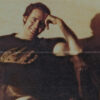If the title “Born to Fly” suggests the type of film where inspiration and achievement come easily, the film’s subject Elizabeth Streb dismisses it quite early. A choreographer for whom dance is a full-contact sport, Streb can be heard saying mere minutes into the film that she did not look to birds when crafting routines where her dancers would defy gravity, but instead find the right fit for herself.
In willing the human body to do what comes naturally to other species, Streb enjoys the unexpected results of taking things places they aren’t necessarily meant to go and perhaps Catherine Gund’s most intriguing observation in “Born to Fly,” one that elevates it above a typical biography, is how that idea can be extended to being an artist in worlds where it isn’t an easy fit. Emphasizing the “working” part of its working artists subjects, the film not only studies the iconoclastic choreographer, but her company made up of dancers who throw themselves into part-time jobs to support their studio time as readily as they do into each other during one of Streb’s productions. Neither of these aspects are pretty at first, but they are in the service of finding something new and while Gund doesn’t reinvent the wheel in profiling Streb, it witnesses something equally exciting.

Taking an almost literal meat-and-potatoes approach to dance, it’s no wonder Streb remained a bit of an outsider in that rarefied world, even as her profile rose. Yet as Streb says “Skill is being able to navigate the known world,” and even as she recalls how the first production she choreographed received a rave from the New York Times and notes somewhat wistfully it was the last one, she also takes considerable pride in having the only company where the dancers resemble real people rather than fragile objects.
I wished Gund had been daring as Streb in making the film, adhering to a fairly traditional structure that details Streb’s past and eventually winds its way to what may be one of her greatest triumphs at the Olympics. There is some gentle probing of Gund’s occasionally far-too-dangerous demands, offering up the testimony of a former dancer who Streb admits perhaps pushing a little too far. But Gund is able to capture the magic of what Streb does, which is no small feat, as well as the provocation of her work, which asks what is art not in terms of transcendence but of sweat and tears. To say “Born to Fly” is a piece of work is actually a compliment and has no doubt done its subject proud.
“Born to Fly” will open in New York on Sept. 10 at Film Forum, followed by a series of screenings throughout the country. A full list of dates and theaters is here.





Comments 1